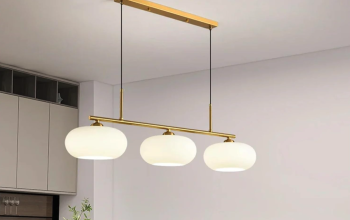Light sculptures are a form of three-dimensional art that utilize light as the primary medium. They can range in size from small, tabletop pieces to large, outdoor installations. As a unique and captivating art form, light sculptures have gained popularity over the years, captivating and inspiring viewers all over the world.
The History of Light Sculptures
The origins of light sculptures can be traced back to the 1960s, where a new art movement emerged that came to be known as “Light and Space.” This movement focused on incorporating light as a medium of art, rather than just its ability to illuminate or cast shadows. Artists of this movement experimented with various forms of light sources such as neon, fluorescent lights, and halogen lamps to create works that explored perception, light, and space.
During the 1970s and 1980s, the use of LEDs became increasingly popular, and artists began to incorporate them into their artwork. LED technology allowed for intricate and dynamic illumination effects, enabling artists to create more complex and advanced light sculptures.
The Design and Creation of Light Sculptures
When it comes to designing and creating light sculptures, there are several factors to consider. The first is the light source itself, which can vary widely depending on the desired effect. Some artists prefer to work with traditional forms of lighting, such as neon or incandescent bulbs, while others choose to use LEDs or fiber optic cables for their sculptures.
Once the lighting is chosen, the artist can begin to experiment with different shapes and forms for the sculpture. Some artists choose to make literal representations, such as animals or human figures, while others opt for more abstract or geometric designs.
In addition to choosing the light source and design, the artist must also consider the environment in which the sculpture will be displayed. This includes factors such as the amount of ambient light in the space and the desired viewing angle of the piece.
Examples of Light Sculptures
One famous example of a light sculpture is James Turrell’s “Roden Crater.” The sculpture is a natural volcanic cinder cone in Arizona that Turrell has been converting into an art installation since the 1970s. The interior of the crater features a complex network of rooms and tunnels, all of which are designed to capture and manipulate the surrounding light.
Another example is Leo Villareal’s “Bay Lights” installation, which is located on the San Francisco Bay Bridge. The sculpture is made up of over 25,000 individual LED lights that are strung along the bridge’s suspension cables. The sculpture consists of a series of constantly changing patterns that are synchronized to music, creating an immersive and dynamic experience for viewers.
The Use of Light Sculptures in Contemporary Art
Light sculptures continue to be a popular form of contemporary art. One reason for this is their ability to create immersive and interactive experiences for viewers. Many light sculptures incorporate elements of music and movement, allowing the viewer to engage with the artwork on a more visceral level.
In addition to their visual appeal, light sculptures can also have social and political significance. For example, Ai Weiwei’s “Forever Bicycles” installation uses 1,254 bicycles to create a massive, three-dimensional sculpture. The piece was designed as a commentary on the Chinese government’s rapidly changing urban landscape, and the resulting traffic congestion that has come along with it.
The Future of Light Sculptures
As LED technology continues to evolve, it is likely that light sculptures will become even more advanced and complex. One area of particular interest is the use of interactive technologies, such as motion sensors or virtual reality, which could allow viewers to physically interact with the sculpture.
While the future of light sculptures is uncertain, one thing is clear: this unique and captivating art form is here to stay. As technology and artistic creativity continue to evolve, we can look forward to more stunning and innovative light sculptures that will shape the art world for years to come.
Light sculptures are a fascinating form of art that continues to captivate and inspire viewers around the world. Through the creative use of light sources, design, and environment, artists can create sculptures that offer a unique and immersive experience for their audience. As LED technology continues to evolve, it is likely that light sculptures will become even more intricate and interactive, offering new levels of engagement and creative expression. As a unique and captivating art form, light sculptures will undoubtedly continue to inspire and captivate audiences for years to come.



